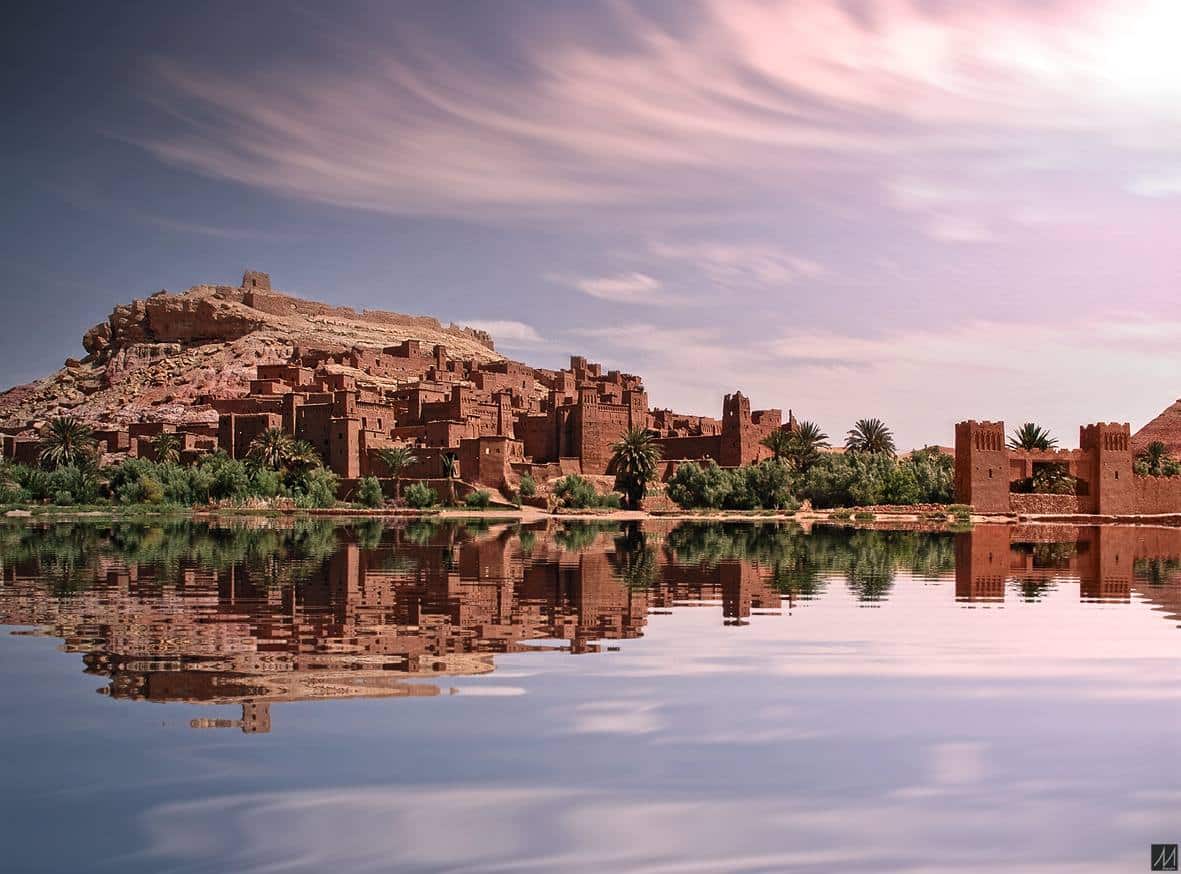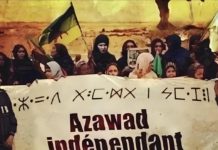
[dropcap]T[/dropcap]he drawn image on Imazighen in tourism portrayals is complicit with orientalism. I seek out to revisit this integral part of sacrosanct pictorial gaze. The Moroccan Tourism narratives (un) consciously perpetuate this westernized image. This image entices my attention while tailoring a fifteen-day tour. Indeed, although Imazighen are still cemented as Berbers and isolated groups of people in tourism narratives, they have insidiously capitalized on it to re-write the written-out part history. This essay expounds three focal points with examples from tourism-based websites. The first is concerned with principal factors. The second point deals with several manifestations of the Berber use. The last point calls forth recommendations to take notice of in designing and planning tourism tours.
The first point to tackle is the meticulous term of Imazighen, plural, and Amazigh is singular. The most, if not all, tours are tailored to read by non-Moroccans in English, French and Spanish. They have increasingly instrumentalized the term, Berbers. The repetitive use of the term stands for its consolidation and concentration among writers and owners of websites. None can deny the fact that the Berber is more popular than Amazigh in these thousands of websites.
The reasons behind the choice of the term are countless and unjustifiable. I pin down some of them here. The first is the widespread popularity of the term among pantheons of human rights. The second is the lucrative use of the term associated with desert and inevitable visit of them. “Berbers” are made to use their “Berberness” in order to financially live and benefit from their current state. Finally, it is uneasy to be a Berber; one has to live in isolation from the modern and globalized world.
Hidden reasons account for undeclared purposes. The first is the repudiation of the state in connection with the Amazigh question. Many educated activists constantly strive to mitigate the distorted image on Imazighen by revisiting the tourism narratives. It seems that no academic research conducted in this area to this day. Another critical factor is the incompatibility of business with lively and vibrant culture. To be precise, tourism intends to cover (and uncover) historical pitfalls of the political system; it had better help tourists, including Moroccans, to realize the truth, even if it is partial truth to use James Clifford’s terms.
The second point deals with several manifestations of the Berber use. Below I discuss these common incarnations of western legacy to the national tourism. Whenever a trip or tour planner includes the term of Berber, the person is obliged to insert with capitalized and sense of desert, authenticity, tranquility, originality, hand-made, nature-driven life. These common traits are noticeably prevalent in the book of Orientalism by Eduard Said. Namely, it refers to binary oppositions one can face in reading the Orientalist works, such as Jorge Orwell, Joseph Conrad, etc.
On the other side, Franz Fanon, Homi Bhabha, Stuart Hall and Chenoa Achebe revolt against the insidious constructedness of these narratives by inventing what Jean François leotard calls metanaratives. In other words, “Can the Subaltern Speak” by Gayatri Chakravatory Spivak is an interesting and seminal contribution in this regard. Here, one is reminded of the significance of these works, with which most Moroccan tourism websites and texts portrayals align. Ultimately, the role of critique, not to summon or make an appeal to rethink over these narratives, is to pick holes in these widely cemented narratives and to revolutionize the Moroccan tourism-based text. In cultural studies, a text is a pretext, so that innocent text is hardly suppositional.
This paragraph is to give epitomes from the following Moroccan tourism-based websites about the supposed meanings of the Berber term in use. The first is from Travel of Morocco Company’s website. One reads “…The camel trek takes about 1hr 30 min to the camp where we continue the spirit of the nomadic Berber lifestyle”. Another interesting example is the following. A website designer writes, “We will cross the massif of the Atlas on the runway of the caves, to visit a nomadic family and see their way of life.” Here the website designer associates lifestyle with nomadism, desert and caves. Similar examples are countless in this regard. To give illustration, Amazighophone and Imazighen historically populate Merzouga; instead of using Berber or Berber language. Merzouga’s Imazighen are ignorant of these dissimilarities in connection with language and space distribution.
There are expressions, such as “Berber” camping, tent, lifestyle, house, hotel, mint tea, clothing, and dinner, music… Are they normal to the tourists or travelers? Why do not they use Amazigh to express freedom in the language choice? How do they stick to use the term even if the guides are aucaurant with new updatings in the country? Why do they provide Tourists with démodé knowledge? The onus of the tourism-concerned people and officials, to my knowledge, is to enlighten the new comers to the country with true and real information, not to mislead and misinform them.
These are overall manifestation of culture in harmony with geography and landscapes. “Berbers” in tourism language and Imazighen in a constitutional language are engaged in the processes of estrangement and self-dissatisfaction embroiled without full consciousness. Finally, there are some proposed practical and necessary recommendations to take notice of for scrupulous people.
The third point calls forth recommendations to take notice of in designing and planning tourism tours. I include this part of recommendations as a prelude to the reform of tourism image among concerned people. I think these recommendations are of great importance. No one can deny the fact that they are insufficient in the service of this economic-driven sector in the country. It is so vital so long as it serves the citizen at the expense of other considerations.
Planners of Touristic trips and tours on Tourism-based websites are advisable that these following recommendations into consideration be to update their démodé (old fashioned) knowledge and their customer’s fresh memory.
1- Cognitively adjust the content with current reality in Morocco and Constitution;
2- Quickly update the tours portrayal of Imazighen, not Berbers as they opt for the term per se;
3- update local and professional guide’s jargon on Moroccan tourism information;
4- include authenticity with modernity in referring to Imazighen as a secular people;
5- uncover the widespread pitfalls of the state in housing nomads in towns and cities;
6- build partnership among websites designers and tours planners;
7- build partnership between guides and transportation companies in defying the pejorative use of the term;
8- Yes for making Imazighen and nomads aware of their rights and duties;
9- No for using nomads in Touristic narrow purposes to grab the attention;
10- Yes for implementing pragmatic approach towards tourism-based nomads and Tourism Company’ owners.
Tourism-based websites are only windows to connect with travels and tourists from within and without of the country. This is a narrow look at websites. Through tourism text, one can intentionally convey perfidious lies and untrue information, for the purpose of satisfying and getting the consent of the customer. That is the reason business has absolutely been failing to meet ethical norm of investigation. In this essay, I make a call for the designers of tourism-based websites to take account of the followings recommendations above. This takes aim at consolidating and ameliorating the reliable techniques, available means and followed style employed in the increasing development for tourism sector, as an integral part of national economy. It should be not at the expense of any essential components of the Moroccan society as well as culture.
















